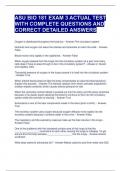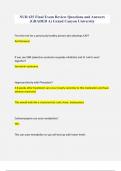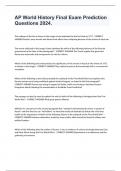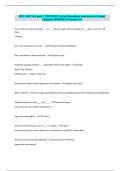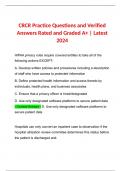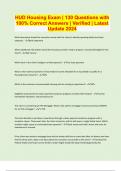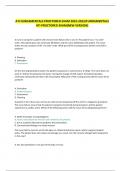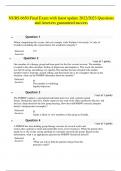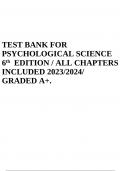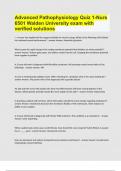Tentamen (uitwerkingen)
ASU BIO 181 EXAM 3 ACTUAL TEST WITH COMPLETE QUESTIONS AND CORRECT DETAILED ANSWERS
- Vak
- Instelling
ASU BIO 181 EXAM 3 ACTUAL TEST WITH COMPLETE QUESTIONS AND CORRECT DETAILED ANSWERS Oxygen is distributed throughout the body by: - Answer-The circulatory system. Nutrients and oxygen can leave the arteries and arterioles to reach the cells. - Answer-False Blood moves very rapidly in the c...
[Meer zien]
